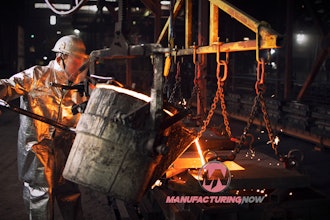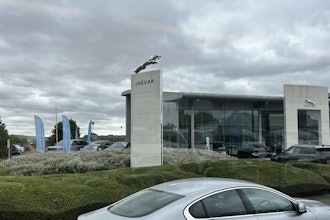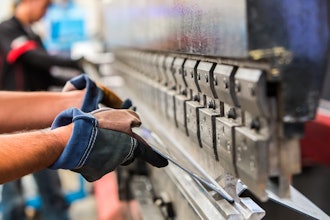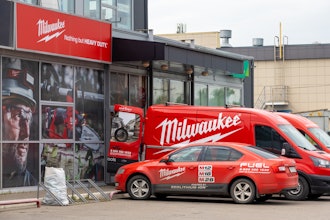Peter Tell, chief technological officer at PIAB, speaks with Product Design & Development magazine on the role of vacuum technology in energy-efficient manufacturing.
Product Design & Development (PD&D): What factors are driving the manufacturing industry's conversion to energy-efficient lines?
Peter Tell: The global debate about the environment is definitely driving companies across many industries to focus on the sustainability of their operations, leading to a growing focus on reducing energy consumption and the associated costs. Each and every component of the manufacturing line contributes to energy consumption, so manufacturers are likely to find many ways to diminish it.
We understand that companies cannot dedicate 100 percent of their resources to energy conservation. Sustainability improvements are only long-lasting and beneficial to manufacturers when they are coupled with profitability or efficiency enhancements.
PIAB aims to give manufacturers the vacuum tools they need to increase energy efficiency, improve overall productivity and reduce costs.
PD&D: What is to be gained from the implementation of vacuum technology in manufacturing?
Tell: Vacuum technology can be a major source of energy-savings. More and more, it is becoming imperative for manufacturers to demonstrate their environmental savvy.
The value of a greener operation runs far deeper than an image overhaul. The reduction in energy consumption offered vacuum technologies also results in cost savings as well as the added benefit of improved productivity.
PD&D: How do PIAB's products specifically improve energy efficiency?
Tell: Each of PIAB's vacuum components plays a distinct role in creating a more environmentally responsible manufacturing operation.
A solid base for an eco-friendly manufacturing operation starts with a decentralized vacuum system. PIAB vacuum pumps, with COAX technology, offer an advanced solution for generating vacuum with compressed air without sacrificing power and flow.
COAX multistage ejectors are smaller, more efficient and more reliable than conventional ejectors. The cartridges can be integrated directly into machinery, which allows for a flexible, modular vacuum system.
Manufacturers should also look for the most efficient conveying solution to reduce energy consumption. PIAB vacuum conveyors, such as the C2100-64, are compact yet powerful. Utilizing COAX technology, they consume less air and energy than other compressed-air-driven conveyors currently available.
Suction cups can also play a significant role in manufacturers reducing carbon footprints. To conserve air and minimize dropped products resulting from air leakage, the manufacturer must choose a suction cup built for the product it will handle.
PIAB's high-friction DURAFLEX cups offer a sturdy grip on smooth, uneven surfaces.
PD&D: What are the challenges faced by manufacturing companies today in using technology to improve energy efficiency?
Tell: If manufacturers want to reduce energy consumption by implementing vacuum technology, they must discern between a decentralized and a centralized system.
A centralized system is designed with the source of the vacuum power located too far away from the point of use, resulting in inefficient use of energy. Manufacturers installing decentralized vacuum systems can cut energy consumption and maximize vacuum source effectiveness.
PD&D: Can you describe your innovation process for developing products that offer energy saving benefits?
Tell: Each process at PIAB begins with little light bulbs — points where we identify a problem and carve a path to the answer.
Forty years ago, when I entered the business of vacuum technology, I understood that energy consumption was a problem.
Seeing the problem in many contexts helped to identify the solution, which in this case, was a decentralized vacuum system. Another key component of our R&D process is a passion for what we do.
We believe that continuous innovation can drive more energy-efficient manufacturing. It's exciting to work with clients in implementing technology that will take them one step further in reducing their carbon footprints.
PD&D: How do you begin your assessment of a manufacturer's line to determine what changes the company should make?
Tell: Improvements to reduce energy consumption must be developed to fit each unique manufacturer. When proposing energy-saving alterations to manufacturing lines, we always work to make sure that we really understand the client's process, products, problems and potential improvements.
There are multiple components to making a line more energy efficient and no component is minute enough to ignore. Something as small as a suction cup used to move products down a packaging line can be a major source of energy and product waste.
Vacuum flow is also important for manufacturers wishing to lower their energy usage. As vacuum level increases, vacuum flow decreases. Suction cups should work with the minimal level of vacuum flow possible to achieve the desired grip and result in maximum energy savings. Often, this issue takes a back seat to discussions about vacuum level, but manufacturers should be attentive to the flow from the suction cup.
PD&D: What are some unique energy saving applications that PIAB currently has in progress?
Tell: One of our current projects, creating a vacuum system for a woodworking machine, is being subsidized in Europe as a transnational effort to develop an energy-saving manufacturing solution. This is just one example to show how PIAB is working with other companies that share in the same philosophy that sustainability is a vital component of the supply chain.
In another example, Delkor Systems, a manufacturer of end-of-line packaging machinery, equipped its Spot-Pak machines with PIAB's vacuum gripper systems to pick up and transfer yogurt cups.
PD&D: How do you see the energy savings goals of manufacturers evolving over the next five to 10 years?
Tell: Years ago, our customers were most concerned about increasing productivity. Today, our customers' focus hasn't shifted away from productivity, but grown to include sustainability benefits as well. Manufacturers want to be faster and more productive, but they understand they may be taxed for their carbon footprint in the near future, so energy savings will remain a top priority.
PD&D: Where does PIAB hope to take vacuum technologies in the future?
Tell: Our major objective is to continue to serve our customers by helping them achieve energy conservation goals.
Thus far, we've helped customers cut energy consumption by as much as 98 percent. We are also working diligently to offer more customized solutions to end users as well as collaborating with OEMs to integrate our components into their machines.
Above all, my colleagues at PIAB and I are excited to see how far we can go in creating innovative, energy-saving technologies.
Over the past two years, a sense of urgency has risen to reform manufacturing operations and how they affect our world. Though we are driven by the competition to stay ahead of the pack, we appreciate and respect the camaraderie that has sprouted within each industry we serve.
There is a strong sense that we are in this together, not just to build a faster manufacturing line tomorrow, but to build the foundation for the future of environmentally responsible manufacturing. We are committed to partnering with our customers to find new, innovative ways to do so.


















